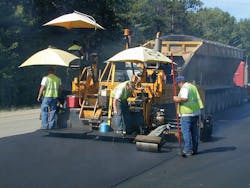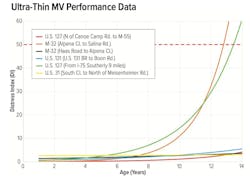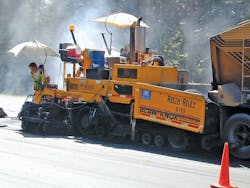From the Archives: Michigan DOT collaboration delivers cost-effective pavement solution
The U.S. has over 3 million miles of paved public roadways.
Our nation’s vast roadway system connects citizens to goods, services, and one another, but systems need to be managed. A good asset management system understands that assets require developing, operating, maintaining, and eventually selling. Depending on costs, the goal is to find the most cost-effective path to keep an asset useful over its life cycle. For pavements, the life cycle is long, as pavements serve a community for decades, and one way to further extend a pavement’s useful life is to conduct preservation treatments. Pavement preservation is a proactive approach to protect and maintain existing pavements. In the long run, preservation can reduce greenhouse gas emissions, cost, and traveler delay. One tool in an agency’s toolkit is the use of asphalt overlays, which provide a smooth asphalt surface on a well-performing roadway to extend the pavement’s life, add structure, and enhance driver satisfaction with a smooth ride.
A dense graded surface course used over flexible or composite pavements for preventive maintenance is what is considered an ultra-thin asphalt overlay, or thinlay. Developed in the late 1950s in the city of Rockville, Maryland, and generally applied at a rate of 65-90 lb per sq yd or about 0.6-0.8 in. average thickness, these mixtures have a successful track record of providing smooth, safe, and cost-effective roadways to U.S. drivers.
The Michigan Department of Transportation (MDOT) and the Asphalt Pavement Association of Michigan (APAM) have worked cooperatively to develop an ultra-thin asphalt overlay specification for use in the state. Developed in 1998 specifically for placement on low-volume roadways as part of MDOT’s Capital Preventive Maintenance (CPM) program, Michigan has a 22-year history of success employing ultra-thin asphalt overlays. Revised cooperatively in 2001 to include specific mixtures for medium and high-volume roads, the revised specifications engineer the mixture to perform under increased traffic loads by utilizing polymer-modified binders as well as more angular aggregates. RB


